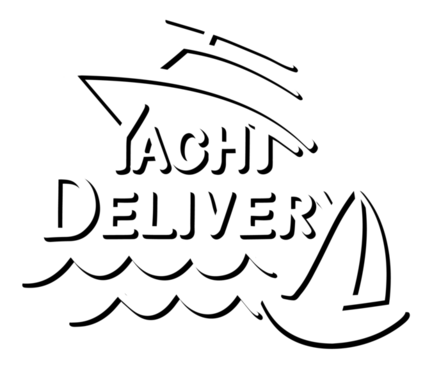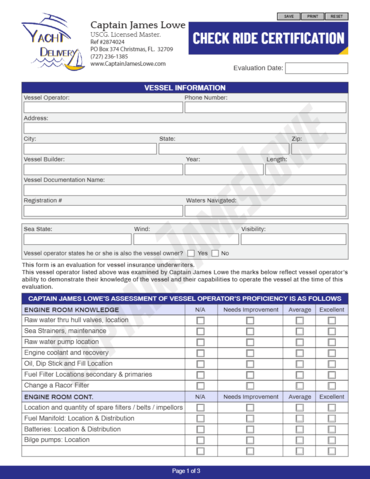Captain James Lowe
USCG 200 Ton Licensed Master
(727) 236-1385

Check ride certification Captain's sign-off
"Evaluation and or training requested by the boat / yacht owners insurance company"
Experienced yachters with new policies as well as new boat owners are often requested to have a USCG. licensed captain sign off on the yacht-owner's vessel familiarity and operation prior to the new boats insurance policy going into effect.
Captain James Lowe gives evaluation of a boat owners familiarity, and operating capabilities. Or if needed training to new owners so they can be safe and proficient and be signed off for their insurance companies.
If you just purchased a new boat your insurance company may require an experienced professional captain to be aboard with you for your voyage from place of purchase to the yachts new home port.
Captain James Lowe is a USCG. licensed Master.
In order to be signed off by Captain James Lowe the owner of the boat must have a basic understanding of navigation and should be able to demonstrate A competent ability to safely operate the vessel at sea in a channel and in close quarter maneuvers such as docking.
The new owner should have a basic knowledge of the vessels equipped systems operation, and maintenance and simple repairs.
The Owner should also be aware of the location and use of the vessels required safety equipment.
If the owner is able to demonstrate a competent ability to safely operate the vessel then this could be a simple evaluation and sign off.
Training is available if you are unfamiliar with the vessel, its systems the location of these systems
Whenever you own or operate a vessel, You are not just captain but also engineer, and deckhand.
Engine Room Knowledge
- Location of raw water thru hull valves
- Sea Strainers, maintenance
- Raw water pump location
- Fresh water & Coolant Recovery
- Oil, Dip Stick and Fill Location
- Fuel Filters: Location, Racors & Primaries
- Can Change a Racor Filter
- Can change a primary fuel filter
- Spare filters on board? location
- Fuel Manifold: Location & Distribution
- Batteries: Location & Distribution
- Bilge pumps: Location
- Generator
- Oil dip stick location
- Coolant location
Electrical Panel
- Switching from Shore Power to Generator
- Breaker Discussion (Narrative)
Bilge Pump Locations Throughout Vessel
Safety Equipment
- Life Jackets, type, location and quantity
- Flare kit, location, & expiration dates
- Fire extinguishers, location and quantity
VHF Radio
- Understand Operation:
- Mayday
- Call for assistance
- Weather checks
Rules of the Road
- Lights
- Right of way
- Whistle signals
- Backing
- Getting Underway
- Danger
Navigation charts and equipment
- Paper and electronic charts on board for local area
- Read Latitude and Longitude
- Understand Channel Markers
- Rader: (use & understanding)
- GPS: (use & understanding)
- SSB (channel selection and use)
Boat Handling
- Getting underway
- Backing Down
- Wind Problems
- Anchoring
- Storm Anchoring
- Twin Prop use
- Bow Thruster Use If equipped
- Heavy Weather Techniques
- Emergency Procedures
- Man Overboard
- Securing vessel in slip or at Dock
- Running at Night